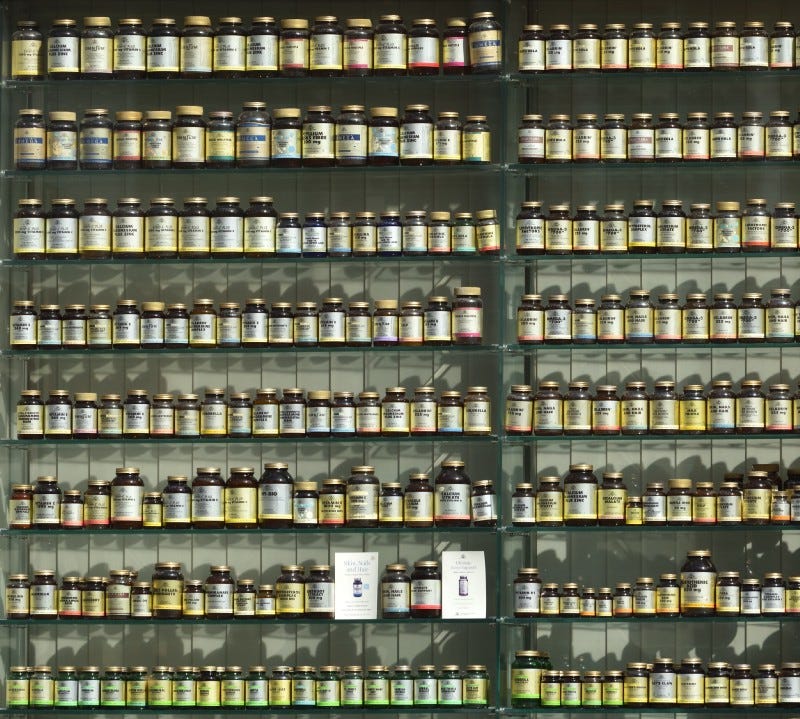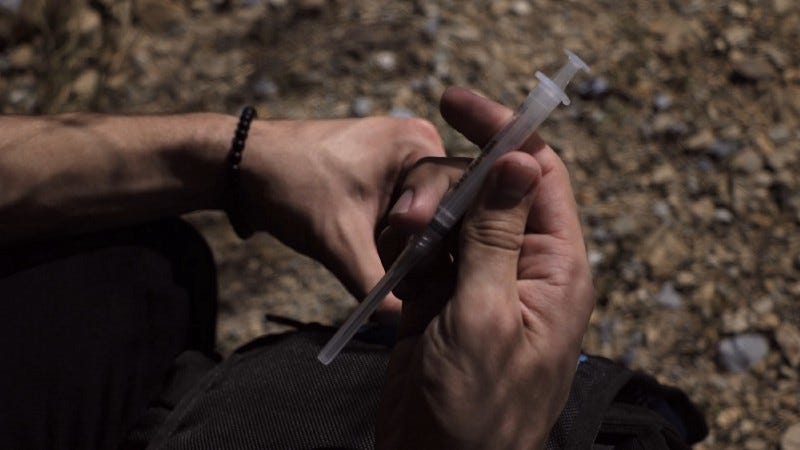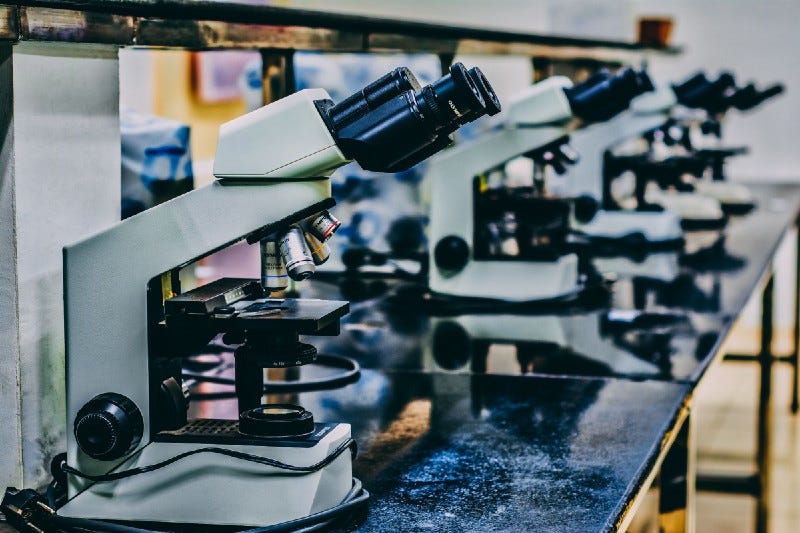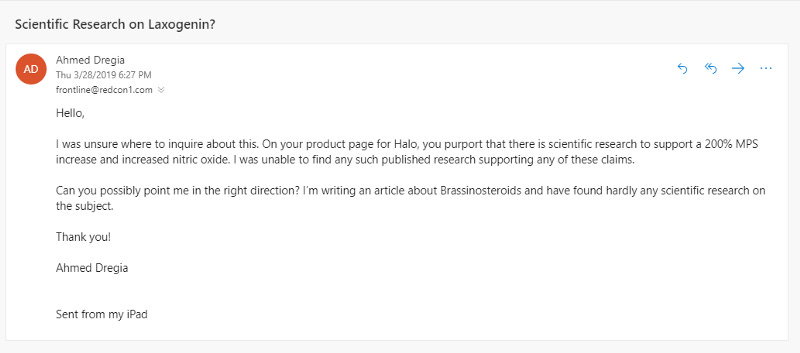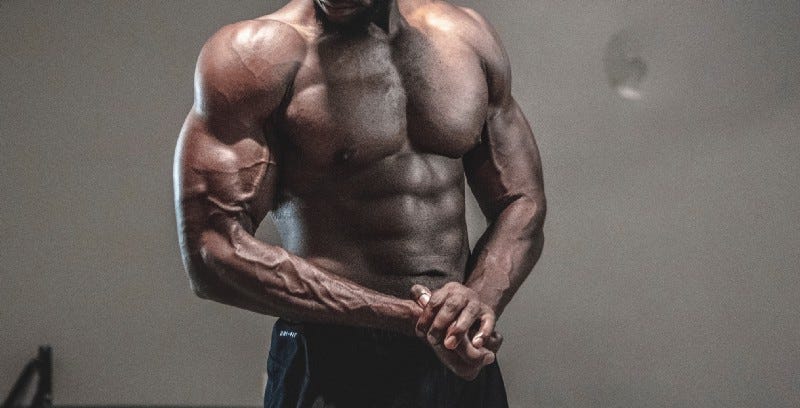What the Heck is Halo? — Laxogenin and Other Brassinosteroids
No promises in the world of weightlifting can quite stack up to the elusive allure of steroids. And, rightfully so; their demonstrative…
This article was originally published on my personal Medium account.
No promises in the world of weightlifting can quite stack up to the elusive allure of steroids. And, rightfully so; their demonstrative power to induce anabolism has been witnessed in both science and anecdote. In some cases, androgenic anabolic steroid users experienced greater lean mass increases than new, natural lifters, even when not even lifting weights at all.
Unfortunately, as is ubiquitously known, steroid usage does not come without consequences, some of which are relatively irreversible. Many over the years have touted alternative panaceas that allegedly serve the same function and effect as recognizably malignant steroids, but without the undesirable consequences. These attempts at a quick buck tend to manifest themselves in hoaxical training regimens, absurd dietary patterns, and snake oil supplements.
One of the most contemporary of these crazes surrounds a supplement known as laxogenin (formally known as 5-alpha hydroxy laxogenin), a compound belonging to a collection of plant-derived compounds known as brassinosteroids. Brassinosteroids are chemically similar to animal-cholesterol-derived steroids, and serve a similar purpose in plants. One of the most popular brands of laxogenin is a product called Halo, being sold by the renowned supplement company, RedCon1. RedCon1 asserts some rather bold claims on their product page, alleging that their 100 mg/capsule dosage is capable of delivering 200% increases in muscle protein synthesis. They promise things like:
Steroid-like anabolism;
Decreased cortisol;
Greater fat loss;
. . .all while having, allegedly, no effect on your endocrine system, androgen receptors, or hormonal levels! Whenever a supplement, product, or shortcut sounds too good to be true, it very likely is, in fact, too good to be true. To be frank and succinct: we simply do not know enough about laxogenin, brassinosteroids, and other related plant-derived compounds, to fully understand their efficacy and safety.
An Overview of Androgenic Anabolic Steroids
To better understand the fanfare surrounding laxogenin and other brassinosteroids, it’s important to first understand their taboo analogue, androgenic anabolic steroids, commonly referred to as anabolic steroids or often simply as “steroids”.
AAS’s are one of the most controversial performance enhancing drugs in the realm of athletics. Their efficacy cannot be denied or understated. They act on a variety of mechanisms, but an enzyme called 5-alpha-reductase is almost always involved in breakdown into dihydrotestosterone (DHT), which acts directly on muscle to incur growth.
In clinically monitored settings, strength improvements in the ballpark of 5–20%, as well as lean mass gains of 2–5 kg, have been observed within a short period of time (less than 12 weeks). In one study, a group of participants being administered AAS’s without exercise gained 2 more pounds of muscle within a 12 week period than a group exercising naturally. These effects are observed in clinical settings with controlled dosages. In recreational settings, AAS abusers may administer even greater dosages than those tested in the studies. (1) (2) (3)
As most are well aware, these miracle drugs don’t come without their share of unsavory ramifications, including, but not limited to:
Rampant libido;
Increased bodily acne;
Body hair increase;
Escalated aggressive or belligerent behavior;
Regular testosterone production is impaired, permanently in some circumstances;
Elevated blood pressure, depressed HDL cholesterol (the “good” kind);
Psychological and behavioral implications, including aggression, hostility, and dependency;
Disorders affecting the endocrine, immune, and sebaceous systems;
Urogenital and haemostatic changes;
Brassinosteroids, by Comparison
Many of these consequences are brought about as a result of the androgenic nature by which these drugs are metabolized. One of the major selling points propped in favor of brassinosteroid supplementation suggests that they have no side effects, because they do not act on androgen receptors in the same way that AAS’s do.
Given the limited available research we have surrounding brassinosteroid safety (and nearly no research surrounding laxogenin as an anabolic agent, in particular), one cannot assure anything in totality about these compounds. However, the limited research we do have appears to indicate that orally ingested/topically applied brassinosteroids do not appear to have any hormonal or androgenic effects. While these indications are promising, without further research (including a meta-analysis or research review), one cannot write off any and all concerns about the safety of the supplement at any dosage. One would be foolish to ascertain complete safety from just one or two studies. (6) (7)
Likewise, the effectiveness of these compounds to produce a promising anabolic effect is also largely up in the air. Some of the only research examining the effects of brassinosteroids measured muscle protein synthesis increases of about 40% (similar to IGF-1), which is a far cry from RedCon1’s claims of 200%. In one study in particular, researchers used 20–60 milligrams per kilogram of body weight on rat muscle tissue. Each capsule of RedCon1's Halo only contains 100 mg of laxogenin. One would have to take the whole $60 bottle to achieve a clinically effective dosage, at this rate. What’s more, these studies tested compounds similar to laxogenin on rat muscle tissue, not even human subjects. The lack of solid research on these compounds suggests that no one in their right mind could recommend a “clinically effective” dosage, nor do the dosages included in popular products currently on the market appear consistent with the research. (6) (7) (8)
The only study supporting RedCon’s audacious claims appears to be a Russian study from 1976 which I am unable to access nor understand. (9) To provide RedCon1 a fair shot at defending their claims, I went ahead and reached out to them via email:
As of publishing, I have yet to receive a response from anybody at the company. I was unable to provide any other research corroborating their claims, even after extensive searching.
When you dig into anecdotal review, you find a polarizing blend of different opinions. (10) (11) (12) It’s worth noting that placebo drugs are a powerful implicator of athletic performance, and many of the people supporting laxogenin may or may not be under the influence of their own psyches, as indicated by a study exploring placebo drugs on athletic performance. (13)
Closing Thoughts
While brassinosteroids exhibit some promise as a potential alternative to traditional androgenic anabolic steroids, their safety and efficacy is largely up in the air. To recap:
Current producers of brassinosteroid supplements flaunt their non-androgenic nature as all-encompassing safety;
The available published research surrounding brassinosteroids does not support the audacious marketing claims surrounding their safety, nor the anabolic effects of the supplement;
While some research signifies promising results for brassinosteroids as an anabolic agent, there is nowhere near enough research to cement their heavily marketed must-have status.
In other words, don’t buy into the marketing, hype, and inadequately supported claims put out by the sales-y types orchestrating these supplement companies. Spend your time, money, and energy more productively elsewhere, perhaps on improving your diet or even cheaper, clinically proven supplements such as creatine and l-citruline.



